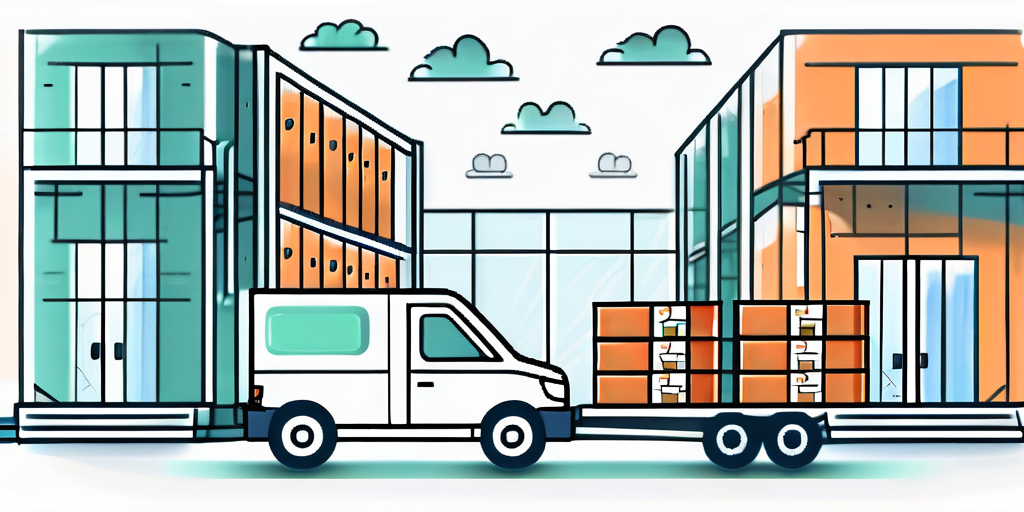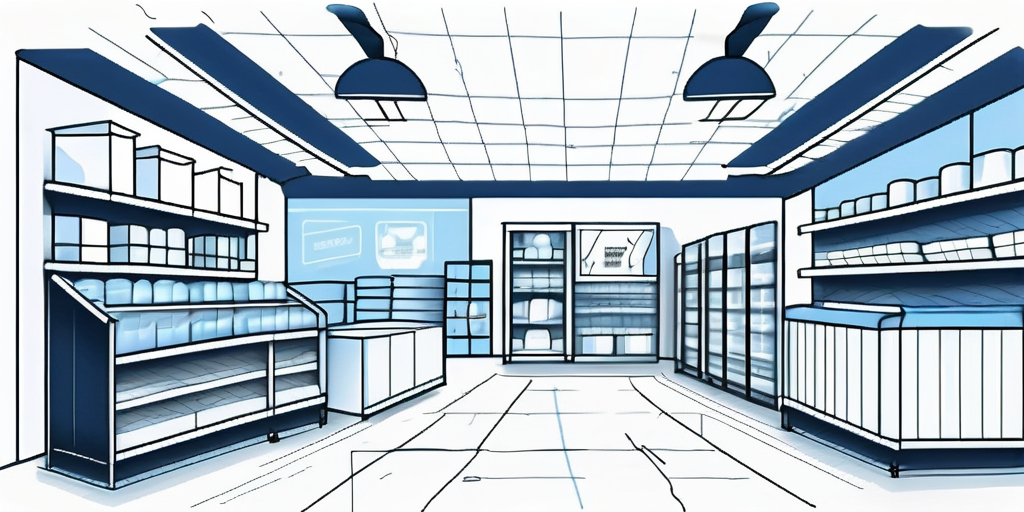In recent years, dropshipping has gained popularity as a lucrative business model among entrepreneurs. The appeal lies in its simplicity and low startup costs. But what exactly is dropshipping, and how can you get started? In this comprehensive guide, we will delve into the fundamentals of dropshipping and provide you with the knowledge and tools to launch your own successful dropshipping business.
Understanding the Basics of Dropshipping
What is Dropshipping?
Dropshipping is a business model where the retailer does not keep inventory in stock. Instead, they partner with suppliers who handle the inventory and shipping processes on their behalf. When a customer places an order, the retailer forwards the order details to the supplier, who then fulfills and ships the products directly to the customer. As a dropshipper, you essentially act as a middleman between the supplier and the customer, focusing on marketing and customer service.

Benefits of Dropshipping
One of the key advantages of dropshipping is that it eliminates the need for upfront inventory investment. Traditional retail models require purchasing products in bulk, which can be risky if the demand is uncertain. With dropshipping, you only pay for a product once you’ve made a sale, reducing financial risk significantly. Additionally, dropshipping allows you to operate your business from anywhere, as you don’t need to handle physical inventory or shipping logistics.
Potential Challenges in Dropshipping
While dropshipping offers numerous benefits, it’s important to be aware of the potential challenges that come with this business model. One common challenge is managing product quality and returns. Since you don’t handle the inventory, you rely on the suppliers to deliver quality products to your customers. This can be a delicate balance, as maintaining a good relationship with your suppliers is crucial. Regular communication and quality control measures are essential to ensure customer satisfaction.
Another challenge is intense competition. As dropshipping has become more popular, many entrepreneurs have entered the market, making it vital to find a unique niche and differentiate your business. In order to stand out from the crowd, you need to offer something special to your customers. This could be through personalized customer service, exclusive product offerings, or innovative marketing strategies. By focusing on your strengths and finding ways to add value to your customers’ experience, you can carve out a successful niche in the competitive dropshipping landscape.
Furthermore, dropshipping requires a strong understanding of digital marketing and e-commerce. In order to drive traffic to your online store and convert visitors into customers, you need to develop effective marketing strategies. This includes search engine optimization (SEO), social media marketing, content creation, and email marketing, among others. Staying up to date with the latest trends and best practices in digital marketing is essential to stay ahead of the competition and attract a steady stream of customers.
Setting Up Your Dropshipping Business
Choosing Your Niche
Before you begin setting up your dropshipping business, it’s crucial to select a niche that aligns with your passions and has market demand. Consider your interests, hobbies, and expertise when choosing a niche. Are you a fitness enthusiast? A fashion lover? A tech geek? By selecting a niche that resonates with you, you’ll not only enjoy the process of running your business but also bring a unique perspective and understanding to your customers.

But passion alone is not enough. It’s also important to conduct thorough market research to assess the competition and determine if there is a viable market for your chosen niche. Look into the demand for products within your niche, the level of competition, and the potential profit margins. Remember, finding a niche that strikes a balance between passion and profitability will set you up for success.
Identifying Your Target Market
Once you’ve chosen your niche, it’s essential to identify your target market. Who are your potential customers? What are their demographics, interests, and purchasing behaviors? Understanding your target market is like having a secret weapon in your dropshipping arsenal. By gaining deep insights into your customers, you can tailor your marketing efforts to reach and appeal to them effectively.
Conducting market research is a crucial step in identifying your target market. Analyze customer data, study market trends, and use social media and other tools to gain insights into your target audience’s preferences and needs. By understanding their pain points and desires, you can position your products in a way that resonates with them, creating a strong connection that leads to increased sales and customer loyalty.
Selecting a Business Model
There are various business models you can adopt for your dropshipping business. One common approach is to create your brand and establish a niche store focused on specific product categories. By specializing in a particular niche, you can become an expert in that area, gaining the trust and loyalty of customers who are passionate about the same niche.
On the other hand, you may choose to create a general store that offers a wide range of products, targeting a broader audience. This approach allows you to cater to different customer preferences and capture a larger market share. However, it requires careful management of product selection and marketing strategies to ensure coherence and appeal to a diverse customer base.
Consider your niche, target market, and long-term goals when selecting a business model. Each approach has its advantages and considerations, so choose the one that aligns best with your vision. Remember, your business model is the foundation of your dropshipping business, so take the time to evaluate your options and make an informed decision.
Finding and Partnering with Suppliers
How to Find Reliable Suppliers
When it comes to dropshipping, finding reliable suppliers is crucial for the success of your business. Start by conducting thorough research and vetting potential suppliers. Look for suppliers with a proven track record, positive reviews, and prompt customer service. Utilize online directories, supplier marketplaces, and trade shows to expand your search. Reach out to potential suppliers, ask for samples, and assess their reliability and responsiveness before making a final decision.
One effective way to find reliable suppliers is by leveraging the power of social media platforms. Many suppliers have established a strong online presence, showcasing their products and services on platforms like Instagram and Facebook. By following industry-specific hashtags and engaging with suppliers’ posts, you can discover new and trustworthy partners. Additionally, joining relevant online communities and forums can provide valuable insights and recommendations from experienced dropshippers.
Building a Strong Supplier Relationship
Once you’ve chosen your suppliers, it’s important to establish and maintain a strong relationship with them. Clear communication and trust are key in ensuring smooth operations. Regularly communicate with your suppliers to stay updated on product availability, pricing changes, and shipping times. Provide them with accurate and detailed product information, including images and descriptions, to ensure accurate fulfillment. By fostering a strong supplier relationship, you can rely on their support and maintain customer satisfaction.
Another way to build a strong supplier relationship is by offering incentives and rewards. Suppliers appreciate working with dropshippers who value their partnership and are willing to go the extra mile. Consider implementing a tiered pricing structure, where suppliers receive better rates or exclusive deals based on their performance. Additionally, providing feedback and testimonials for your suppliers can help strengthen the bond and showcase your appreciation for their efforts.
Building Your Dropshipping Store
Choosing the Right E-commerce Platform
When building your dropshipping store, selecting the right e-commerce platform is essential. Look for platforms that offer dropshipping-specific features, such as inventory management and order fulfillment integration. Popular e-commerce platforms like Shopify, WooCommerce, and BigCommerce offer robust tools and integrations to simplify the dropshipping process. Consider your budget, technical skills, and scalability requirements when choosing a platform.

Designing Your Online Store
The design of your dropshipping store plays a vital role in attracting and engaging customers. Optimize your store for a seamless user experience by choosing a clean and intuitive layout. Use high-quality product images and compelling copy to showcase your products effectively. Incorporate user-friendly navigation and search functionality to make it easy for visitors to find what they’re looking for. Finally, ensure that your store is mobile-friendly to capture the growing number of mobile shoppers.
Setting Up Payment and Shipping Options
Providing convenient payment and shipping options is essential for a positive customer experience. Integrate popular payment gateways such as PayPal and Stripe to offer secure and diverse payment methods. Additionally, collaborate with reliable shipping carriers to provide fast and reliable delivery options. Display clear shipping policies and tracking information to keep customers informed. By offering flexible payment and shipping options, you enhance customer satisfaction and build trust.
As you embark on your dropshipping journey, remember that success requires continuous learning, adaptation, and perseverance. Keep an eye on market trends, stay connected with your customers, and consistently optimize your processes. With dedication and strategic efforts, you can build a thriving dropshipping business and achieve your entrepreneurial goals. Good luck!
Furthermore, when choosing an e-commerce platform, it’s important to consider the level of customer support provided. Look for platforms that offer 24/7 customer support, as this can be crucial when you encounter technical issues or have questions about your store. Having access to knowledgeable and responsive support staff can save you time and frustration, allowing you to focus on growing your business.
Additionally, consider the scalability of the e-commerce platform you choose. As your dropshipping business grows, you’ll want a platform that can accommodate your increasing inventory and order volume. Look for platforms that offer flexible pricing plans and the ability to easily upgrade your account as your business expands. This will ensure that your store can handle the demands of a growing customer base without any disruptions to your operations.

